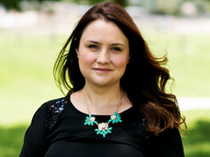Last week the Children Youth and Families Department settled a lawsuit over who qualifies for child-care support and how it sets the out-of-pocket cost for low-income families.
For now, all families with incomes under 200% of the federal poverty level ($51,500 for a family of four) can apply for subsidies that make child care more affordable while parents work or go to school. And it forces CYFD to post rules on their website and in all Early Childhood offices that help parents understand if they are eligible, what their co-pays might be and their right to appeal.
But some questions remain unanswered — like whether the state will keep the eligibility level at 200% and whether current funding will cover the need. The Legislature boosted child-care assistance by about 7% during the 2019 legislative session.

In the meanwhile, the settlement brings consistency to the system and ensures that the state can’t arbitrarily change the rules without a proper process and public input, said Maria Griego, the lead attorney for the New Mexico Center on Law and Poverty, which brought the suit in September 2018 on behalf of OLÉ, a grassroots community organizing group, and several of its members.
In their complaint, the plaintiffs said the department under Gov. Susana Martinez’s CYFD Secretary Monique Jacobson would often turn people away before they could even apply, or use conflicting or arbitrary reasons to deny child care subsidies.
Rent or child care?
One of those parents was Kris Buchmann of Albuquerque. From 2013 to 2015, she was a single mom paying at least $820 a month for child care for her young son, which represented more than 40 percent of her income at the time. She tried several times to qualify for child-care assistance, but other than a two-month period, was turned away despite being under 150% of the federal poverty level.
“I felt like every time I went in there they used one of their tricks against me,” Buchmann said. “I don’t know if they looked at me and thought, ‘Oh well, I’m sure she’ll be able to figure it out.’”
She couldn’t figure it out. Often, Buchmann said, she made the choice between being late on her rent or being late on her child care payment.
As a member of OLÉ, she is hopeful the settlement will make things better for other parents.
“It feels a little bittersweet because this had gone on for years, and it hurt a lot of people. It hurt a lot of single moms in particular,” she said.
What the order says
Judge Matthew Wilson’s order states that CYFD must maintain the 200% eligibility rate until it follows rules for setting its requirements — something the state didn’t do when it lowered eligibility for childcare subsidies from under 200% of the federal poverty level to less than 100% during the depths of the state’s budget crisis in 2013 and then 150% in 2014.

CYFD has 90 days to propose new rules for childcare assistance, with the opportunity for public comment. Where the department will set eligibility is still being considered, according to CYFD spokesman Charlie Moore-Pabst, though he said new CYFD Secretary Brian Blalock wants to keep eligibility at or as close to 200 percent as possible.
About $150 million was set aside for child-care assistance by the Legislature during the session. But right now, only about one-third of eligible children receive state child care subsidies, according to data from the New Mexico Human Services Department, meaning the money could run out if thousands more recipients participate in the program.
If it does, the governor and Legislature would have to approve supplemental money, the department would have to lower eligibility, or a combination of both, Moore-Pabst said.
For now, CYFD has announced on its website that it is keeping eligibility for child care subsidies at 200% until June 30. And as of Thursday, CYFD posted its methodology for calculating co-payment, as required by the settlement. It also has a co-pay schedule that’s valid until March 2020, and an explainer on how to read it. The posted schedule only calculates out-of-pocket costs for one child, not more, however, Griego said.
OLÉ just today released an app called United Parents NM that will help New Mexico parents get help for things like finding childcare or tips on lowering co-pays. It also comes with an eligibility calculator. (Parents can download it here for iPhone or Android.)
No solution for ‘cliff effect’
What this settlement won’t fix is the child-care assistance “cliff effect.” That’s what happens when a parent gets a raise that might take their household income just above 200% of the federal poverty level, making them lose thousands of dollars worth of child care assistance. Right now, qualifications start at just under 200% and end at 200%.
The cliff effect and the low eligibility level are two reasons that early childhood advocates have tried to put an eligibility level of 200% of FPL into state law with an exit at 300%, most recently during the 2019 legislative session. They were unsuccessful, but they plan on trying again in 2020.